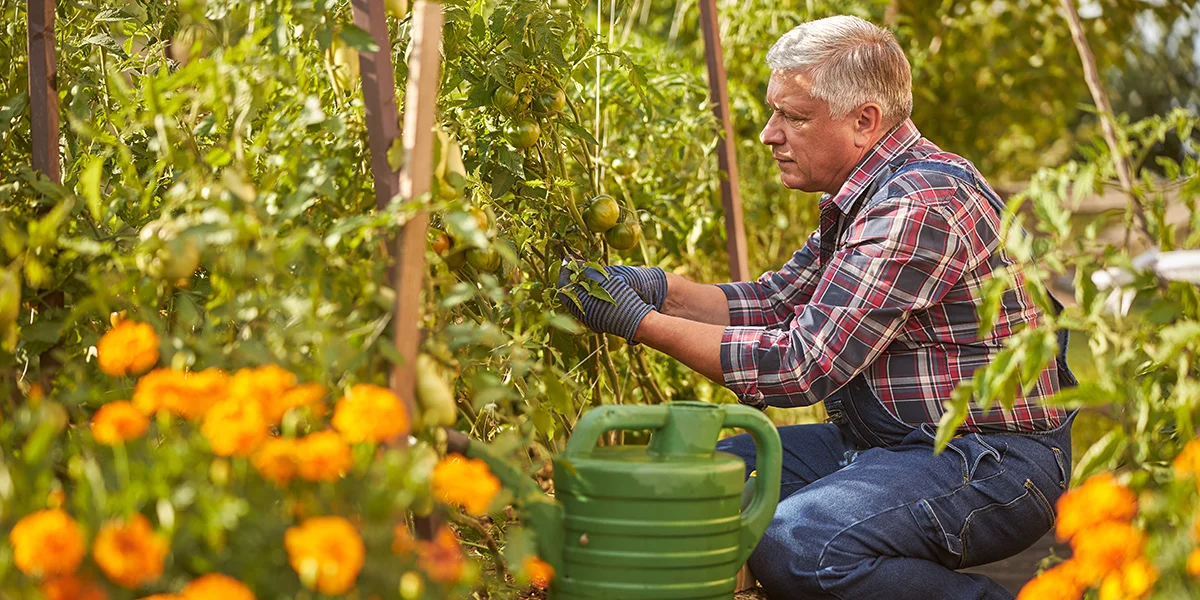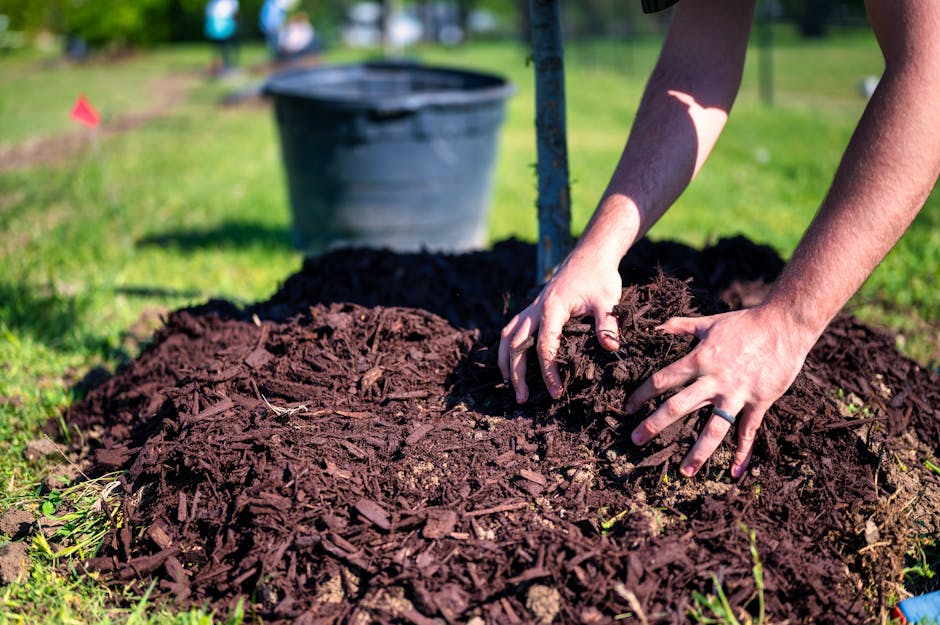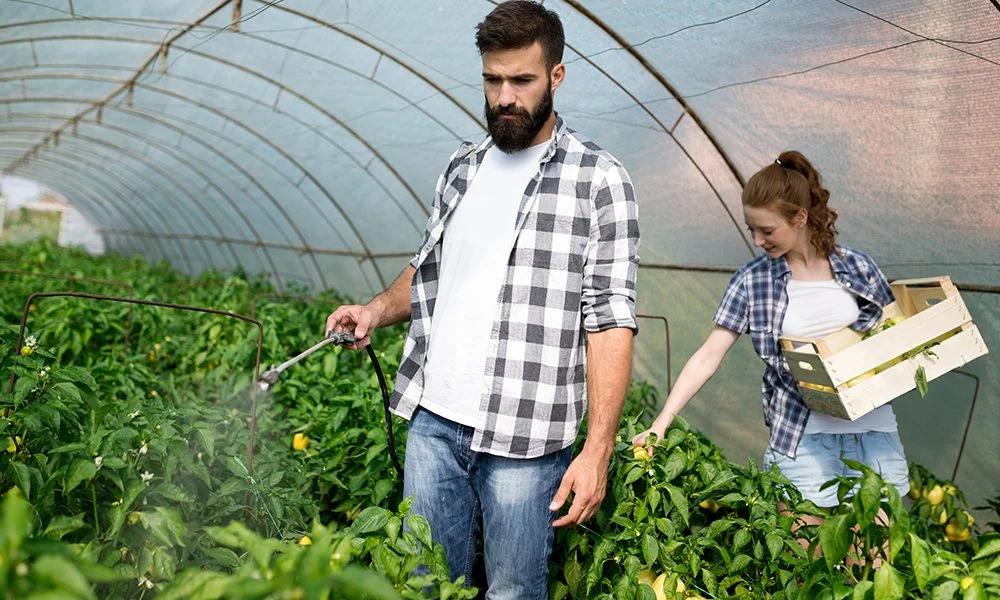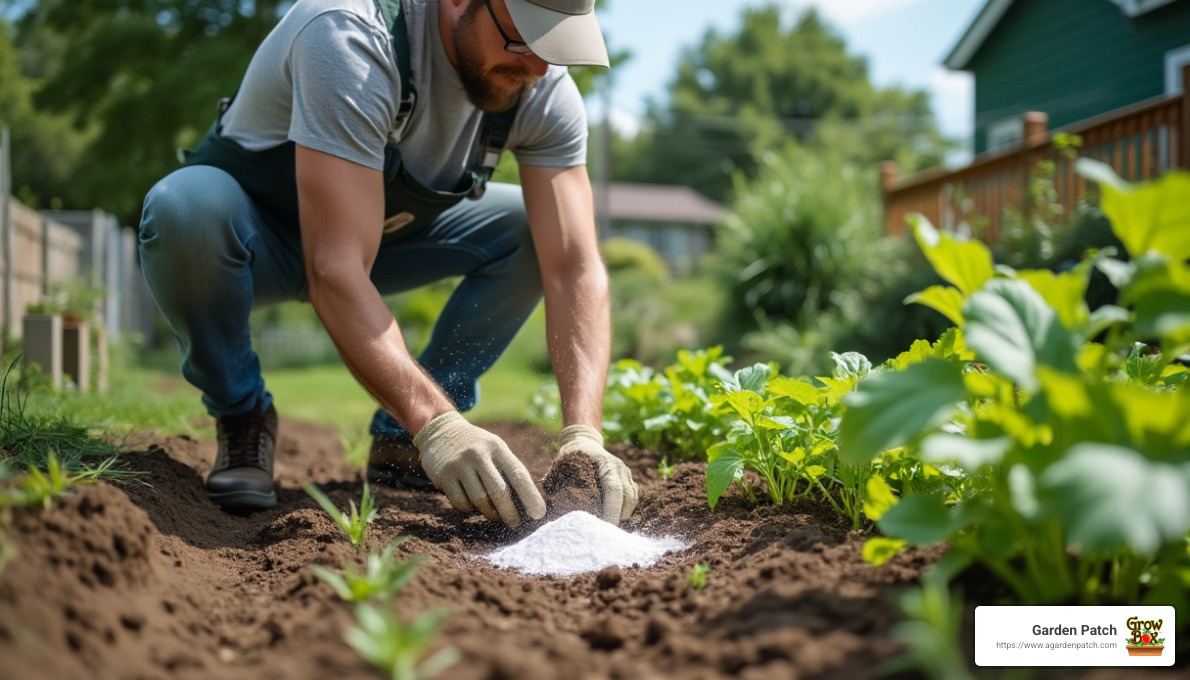Have you thought about how the pH of your soil affects your garden’s growth? If you haven’t, you are not alone! Even experienced gardeners will consider everything from good fertilizer to getting their watering schedule down to an art—all while forgetting what soil pH suits their plants best. Healthy plant growth depends on the right pH level in soil. It affects whether plants can absorb nutrients in the soil and the quality of their produce.
Here at A Garden Patch, we want to set you up for success with each season’s garden. Take the steps below to ensure that your soil stays on par with your pH needs every year. You can also simplify the process when you pair our garden dolomite with The Original GrowBox, which guarantees a precise ratio of soil to dolomite for the perfect pH balance for plants.
How Does Soil pH Work?
Do you remember learning about the pH scale in school? We will give you a quick rundown. The pH scale ranges from 0 to 14. Acidic substances range between 0 and 6.9, while basic or alkaline substances have a pH between 7.1 and 14. Neutral substances sit in the middle at a 7.
Your garden’s pH level depends on your location, soil texture, climate, and other elements. Different plants flourish at different pH levels. For example, roses and vegetables prefer more neutral pH levels, while tropical plants, blueberries, raspberries, and azaleas like slightly more acidic soil.
If you grow vegetables like tomatoes, then your soil’s pH level should be between 6.2 and 6.8. A pH of 6.5 facilitates optimal soil nutrients for tomato and vegetable gardens.
pH level affects the flavor and color of some plants. Soil with a high pH sweetens the flavor of fruits and vegetables, and acidic soil makes them taste sour. You can easily improve the flavor of your vegetables by using the GrowBox to ensure a perfectly balanced soil pH.
Understand How Soil pH Will Make or Break Your Garden
While the pH level in soil plays a key role in the availability of essential soil nutrients, adding fertilizer or plant food to an unbalanced garden will not improve the problem. If your soil has a high pH, then plants cannot absorb or process minerals such as phosphorus, manganese, and iron. Strongly acidic soils kill beneficial bacteria that break down organic matter, which can ruin your harvest.
Think of a proper pH level as stomach acid. Without stomach acid, you would not break down and absorb the nutrients you need to stay healthy. But because you have the right amount of stomach acid, you can enjoy your meals and trust that they will nourish you. When you add substances like A Garden Patch’s Dolomite to your garden’s soil, it pushes the pH back in the right direction and helps the plants absorb the bioavailable nutrients again.
Test Your Soil
To determine how to balance soil pH in your garden, you must test the soil itself. Have you noticed the quality of your harvest declining despite doing everything right? Your struggling garden could indicate that it’s time for a test and an adjustment. You can do this with a test kit or a pH meter.
A test kit typically contains a nitrous solution, a test tube, and a color-coded guide. After reading the guidelines, mix the recommended amounts of soil and solution into the test tube. The mixture changes color to indicate acidity according to the color guide. Alternatively, you can simply slide the pH meter into the soil to read the level on the digital indicator. Once you have your results, you are one step closer to the perfect solution for your garden. For a more in-depth analysis of your soil, see if you can send a sample to a university or agricultural center near you for a full breakdown of minerals and nutrients.

Change Your Soil’s pH to Match Your Gardening Needs
Once you determine on which end of the pH scale your soil falls, you can purchase a variety of products to amend it. Keep in mind that most of these methods have pitfalls, especially for beginners who are new to altering the pH level in soil. Mixing the wrong amount of any given product is tricky. Too little renders your work ineffective, and you will have to recalculate the amount you need. Too much can burn your plants and kill them.
- Make soil more acidic: To lower soil pH, add sulfur, such as aluminum sulfate or garden sulfur.
- Make soil more basic: To raise your soil’s pH, add a garden lime product.
Adding these products to your garden’s soil can be a time-consuming yearly endeavor. Many solutions available in stores take months to fully adjust the soil’s pH for an in-ground garden. You will also need to double-check that you are making the right purchase. For example, there are two types of ground limestone: dolomite lime and calcitic lime. They both have lime in their name. Both will raise the pH of the soil. But dolomite lime enhances the amount of magnesium in the soil, while calcitic lime brings down the amount of magnesium.
Simplify Balancing Your Soil pH with the GrowBox from A Garden Patch
Thrown off by the scientific balancing act of managing the pH level in soil? We have the perfect solution. If you ever notice dark spots forming on the bottoms of your tomatoes, you can add dolomite lime to the mix with ease.
When you use the GrowBox from A Garden Patch, the planter waters and fertilizes your plants with just the right amount of dolomite to balance the pH level in soil. Say goodbye to pH test kits, calculations, and spending hours spreading fertilizer. With the GrowBox, you can sit back and know that your plants are getting the soil pH they need to thrive.
Place your order online or call us at (800)-519-1955 to eliminate the guesswork of gardening today!
Learn more about the differences between dolomite lime vs. garden lime.




